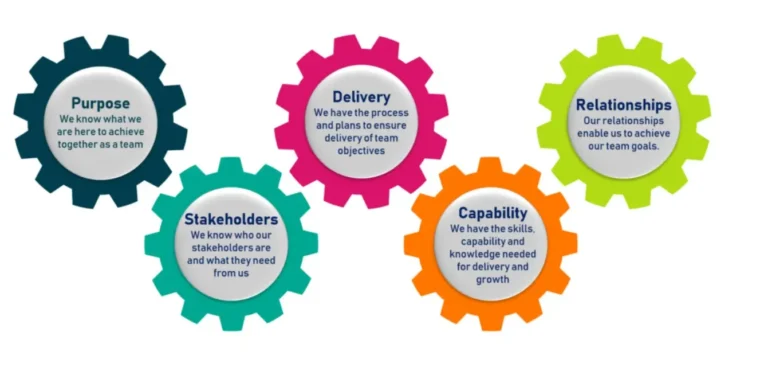Start with Strategic Team Composition
Building effective teams starts with assembling the right mix of people. The most productive teams are not necessarily those composed of the most talented individuals, but rather those whose collective strengths, communication styles, and work ethics align with the task at hand. When forming a team, consider more than just technical expertise—look at cognitive diversity, problem-solving approaches, interpersonal dynamics, and previous collaborative experience. A blend of analytical thinkers, creative minds, detail-oriented workers, and big-picture strategists will typically generate more innovative and balanced results than a team made up solely of one personality type.
The size of the team also matters. Smaller teams tend to move faster and collaborate more effectively due to simpler communication flows, while larger teams may offer more diverse perspectives but risk falling into inefficiency if not managed well. A clearly defined leadership structure within the team—whether a single leader, co-leads, or rotating roles—helps avoid ambiguity and ensures accountability. Equally important is aligning individual roles with personal strengths. Team members are most engaged when they understand how their specific contributions add value and are empowered to own their responsibilities.
Define Purpose, Expectations, and Success Metrics
Before a newly formed team begins working, it’s critical to define a shared purpose. Why does this team exist? What does success look like? What are the timelines and key deliverables? These questions must be answered clearly to provide direction and alignment from the outset. A compelling team mission builds cohesion, especially when it connects to broader organizational goals.
Once the purpose is defined, clear communication of expectations is vital. This includes setting ground rules for collaboration, decision-making protocols, and communication preferences. Teams function better when they understand how to navigate disagreements, distribute tasks, and evaluate progress. Establishing key performance indicators (KPIs) or measurable outcomes also supports accountability and helps teams stay on track. Periodic check-ins, either informal or through structured performance reviews, allow for adjustment and ensure ongoing alignment.
Promote Psychological Safety and Trust
One of the most critical but often overlooked elements of effective teams is psychological safety. Teams thrive when members feel safe to speak up, ask questions, admit mistakes, and offer dissenting views without fear of embarrassment or punishment. Psychological safety fosters open communication, creativity, and faster problem-solving, as team members are more likely to share information and flag issues early.
Trust is the foundation of psychological safety. Leaders play a significant role by modeling openness, vulnerability, and fairness. Encouraging team members to engage in active listening, offer constructive feedback, and acknowledge each other’s contributions strengthens group cohesion. Team-building exercises can also help develop interpersonal bonds, particularly in cross-functional or newly assembled teams. However, trust cannot be forced—it must be cultivated through consistent actions, transparency, and follow-through.
Designing a Workspace That Supports Collaboration
While team performance is often discussed in terms of interpersonal dynamics and processes, the physical and digital environments in which teams operate also play a significant role. A well-designed workspace supports various modes of collaboration, from focused individual work to high-energy brainstorming sessions. Team areas should be flexible, offering access to private focus zones, open meeting areas, and tools for visual thinking and planning.
Technology can enhance the effectiveness of team interactions, especially for distributed or hybrid teams. The best smart boards enable real-time collaboration, allowing teams to annotate, visualize, and share ideas across locations seamlessly. Integrated into meeting rooms or creative spaces, smart boards help make discussions more interactive and decisions more visible. Other collaborative tools, such as video conferencing platforms, project management software, and digital whiteboards, should be chosen for their usability, integration capabilities, and alignment with the team’s workflow.
Adapt, Evaluate, and Evolve Team Structures
Even well-constructed teams need room to adapt. Business environments shift, and team goals, members, and dynamics will inevitably change. Regular retrospectives or team assessments help identify what’s working and where adjustments are needed. Are communication patterns efficient? Are roles clear and still relevant? Are workloads balanced? Open conversations about these questions can prevent stagnation and maintain momentum.
Leaders should also recognize when a team has fulfilled its purpose and should be disbanded or restructured. Not all teams are meant to be permanent. Clear transitions out of a team context are as important as thoughtful entry—providing closure, celebrating achievements, and ensuring knowledge transfer to the broader organization.
In conclusion, creating effective teams requires a strategic blend of the right people, a shared purpose, open communication, and supportive environments. By investing in thoughtful team design and nurturing a culture of trust and adaptability, organizations can unlock the full potential of collaborative work.
Also read-Build Your Business Foundation: Tips for New Entrepreneurs
